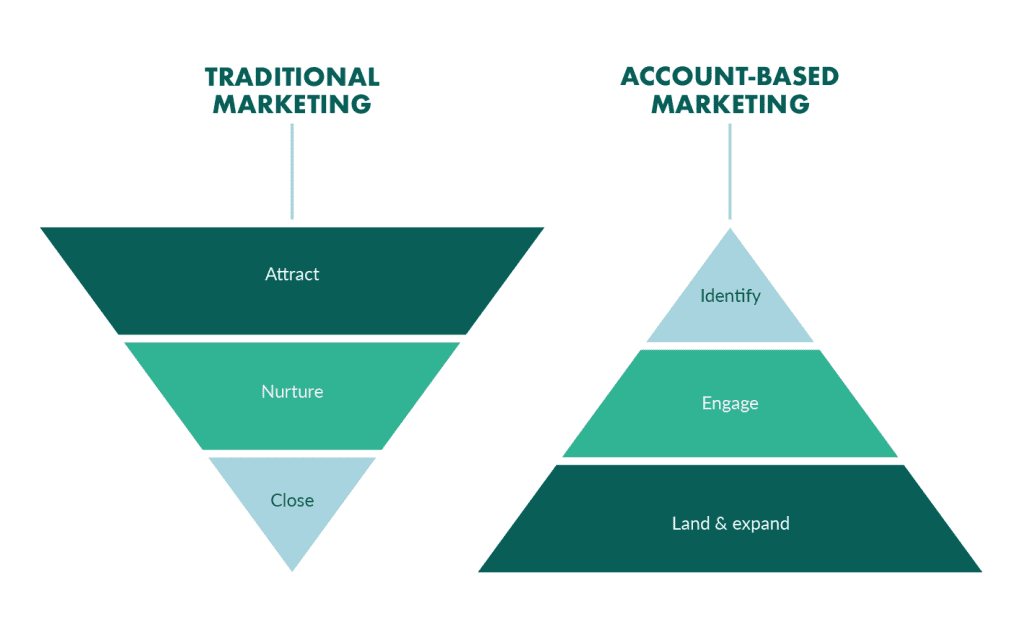In the rapidly evolving landscape of B2B marketing, companies are constantly searching for innovative ways to drive growth and achieve a competitive edge. One approach that has emerged as particularly effective is Strategic Account Based Marketing. Unlike traditional marketing strategies that cast a wide net, ABM focuses on targeting high-value accounts with personalized campaigns. This article explores why Strategic ABM is crucial for business growth and how it can be leveraged to achieve remarkable results.

The Core Principles of Strategic Account Based Marketing
Identifying Target Accounts
The foundation of a successful ABM strategy is the identification of high-value target accounts. This involves analyzing your existing customer base, market research, and leveraging data analytics to pinpoint companies that have the highest potential for conversion and long-term value. Key factors to consider include company size, industry, revenue potential, and alignment with your product or service offerings.
Customizing Marketing Approaches
Once target accounts are identified, the next step is to develop customized marketing approaches tailored to each account’s specific needs and pain points. This involves creating personalized content, offers, and messaging that resonate with the individual challenges and goals of each account. By addressing the unique needs of each target, you increase the likelihood of engaging key decision-makers and driving meaningful interactions.
Aligning Sales and Marketing Teams
Successful ABM requires close alignment between sales and marketing teams. This collaboration ensures that both departments are working towards the same goals and have a shared understanding of the target accounts. Tools like Employee Monitoring Software can help streamline this alignment by providing real-time insights into how team members are engaging with tasks, tracking productivity, and identifying areas where communication may be lacking. By using this software, businesses can ensure that both sales and marketing teams are consistently working in sync, enhancing the overall effectiveness of the ABM strategy.

Benefits of Strategic ABM for Business Growth
Enhanced Customer Engagement
Strategic ABM significantly boosts customer engagement by delivering highly relevant and personalized interactions. When marketing messages and campaigns are tailored to the specific needs and interests of target accounts, they are more likely to capture attention and foster meaningful conversations. This increased engagement can lead to stronger relationships and a greater likelihood of conversion.
Higher ROI and Efficiency
ABM often results in a higher return on investment (ROI) compared to traditional marketing approaches. By focusing resources on a select number of high-value accounts, businesses can optimize their marketing efforts and reduce wasted expenditure on less promising leads. This targeted approach not only improves efficiency but also enhances the overall effectiveness of marketing campaigns.
Improved Sales Conversion Rates
One of the most significant benefits of Strategic ABM is its impact on sales conversion rates. By engaging with high-value accounts through personalized and relevant marketing efforts, companies can better address the specific needs and pain points of potential clients. This targeted approach increases the likelihood of successful conversions and can lead to more substantial and long-term business relationships.
Implementing a Successful ABM Strategy
Choosing the Right Tools and Technologies
To effectively implement an ABM strategy, businesses should invest in the right tools and technologies. ABM platforms, customer relationship management (CRM) systems, and data analytics tools can help streamline processes, track interactions, and measure the success of your campaigns. Selecting the right technology stack is crucial for maximizing the impact of your ABM efforts. As a leading firm, Eiredigital agency, they provide the expertise and tools necessary to optimize your ABM efforts and achieve outstanding results.
Developing Personalized Content
Creating personalized content is a key component of a successful ABM strategy. This content should be tailored to address the specific needs, challenges, and interests of your target accounts. From personalized emails and targeted ads to customized landing pages and whitepapers, every piece of content should be designed to resonate with your audience and drive engagement.
Measuring and Analyzing Results
Continuous measurement and analysis are essential for optimizing your ABM strategy. Tracking key performance indicators (KPIs), such as engagement rates, conversion rates, and account progression, can provide valuable insights into the effectiveness of your efforts. Regular analysis helps identify what’s working, what needs adjustment, and how to refine your strategy for better results.
Conclusion
Strategic Account Based Marketing (ABM) drives business growth by targeting high-value accounts with personalized efforts. Identifying key accounts and customizing marketing boosts customer engagement. Aligning sales and marketing teams improves ROI and sales conversions. As the business landscape evolves, leveraging ABM is crucial for staying competitive and achieving sustained growth.
The future of Strategic ABM looks promising. Advances in technology and data analytics pave the way for more effective strategies. Embracing and refining ABM will position your business for success in a competitive market.
Check out more AI tool.
Elevate Guest Experience with RoomGenie
🚀 Check out NewsGenie – Your AI consultant
